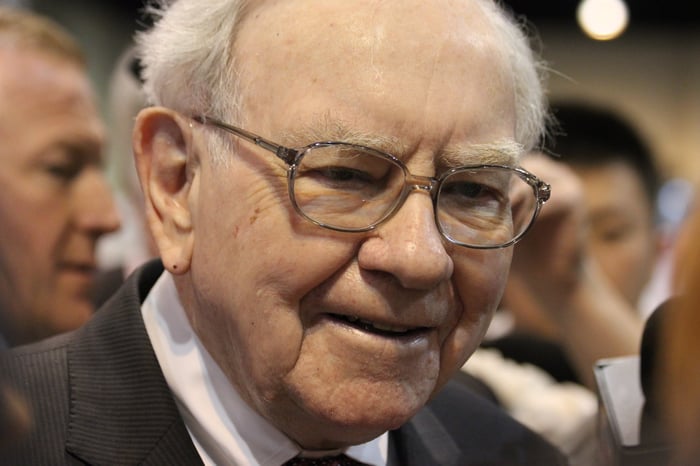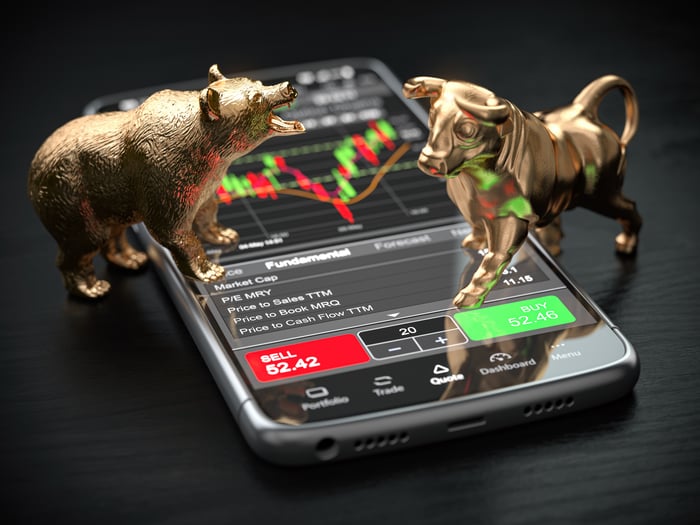3 No-Brainer Warren Buffett Stocks to Buy Right Now
Key Points
Credit card middleman American Express has earned its way to Berkshire's No. 2 spot for all the right reasons.
While the oil and gas industry may be running on borrowed time, it's borrowed a lot of time, during which there's lot of money to be made.
The recent purchase of a stake in Pool Corp. seems unusual on the surface. But a closer look reveals the Buffett-like thinking behind the trade.
Veteran investors know the market is forever changing, requiring you to change with it. These changes include industry leadership, stock-selection strategies, allocation adjustments, and more.
There are still some reliable constants though. One of them is Warren Buffett, and the picks he makes -- or at least approves -- for Berkshire Hathaway's (NYSE: BRK.A) (NYSE: BRK.B) portfolio. If a stock becomes a Berkshire holding, you can bet it's a quality name with a promising future.
Where to invest $1,000 right now? Our analyst team just revealed what they believe are the 10 best stocks to buy right now. Continue »
Here's a closer look at three Warren Buffett picks currently held by Berkshire Hathaway that just might work for your portfolio as well.

Image source: The Motley Fool.
1. American Express
Buffett's done a fair amount of selling over the past few quarters, lightening up on Berkshire's positions in Apple, Bank of America, and DaVita, and outright exiting its stakes in Citigroup and Nu Holdings.
One stock has remained conspicuously untouched for years now, however, to quietly become Berkshire Hathaway's second-biggest holding (right behind Apple). That's credit card outfit American Express (NYSE: AXP).
It's not too difficult to see why Buffett's such a fan, though; the company's certainly more than proven it knows how to make its unique business model work.
On the surface it's just another credit card company. Under the hood though, it's more. Unlike Visa and Mastercard, which are only payment networks for card issuers, American Express is both the issuer and the payment middleman.
This leveraged position allows it to offer a perks and rewards program that cardholders are willing to pay up to $700 per year just to access. This annual fee also means American Express' cardholders tend to be a bit more affluent than the average consumer, and as such are less likely to miss payments, and more likely to continue spending even when other people are tightening their purse strings.
And the proof is in the company's results. With the obvious exception of 2020 when the COVID-19 pandemic was in full swing, Amex's top line has improved every year going all the way back to 2017.
Profit growth hasn't been quite as consistent. It's remained reliable enough, however, to make American Express a solid dividend stock. Although the company tends to not raise its dividend payments in times of uncertainty -- like in the wake of 2008's subprime mortgage meltdown or during the COVID-19 pandemic -- it still continues to pay a quarterly dividend, and begins raising these payments again as soon as the economy makes it feasible to do so.
2. Occidental Petroleum
If it seems like the oil and gas business is inching its way to obsolescence, that's because it is. With the advent of electric cars and renewable energy sources, consumers just won't need oil like they have in the past. To this end, Goldman Sachs predicts "peak oil" -- the point at which the planet's daily consumption of crude stops growing and starts shrinking -- will happen in 2035.
There's a reason, however, that Buffett remains enough of a fan of oil giant Occidental Petroleum (NYSE: OXY) to stick with Berkshire's 265 million share position despite the stock's relatively poor performance of late. That is, there's still a great deal of money to be made in the business between now and then, and even after 2035.
See, while demand will likely start to shrink then, it's apt to shrink very, very slowly. Indeed, outlooks from ExxonMobil, OPEC, and Standard & Poor's all suggest that oil will still be the world's top source of energy production as far down the road as 2050. The continued proliferation of alternative energy options just won't be able to keep up with the ever-growing demand for electricity.
And Buffett feels very good about Occidental's ability to deliver, even in an environment where crude oil prices remain subdued. As he noted in 2023's letter (published in early 2024) to Berkshire Hathaway shareholders:
"Under Vicki Hollub's leadership, Occidental is doing the right things for both its country and its owners. No one knows what oil prices will do over the next month, year, or decade. But Vicki does know how to separate oil from rock, and that's an uncommon talent, valuable to her shareholders and to her country."
That's strong personal praise from the Oracle of Omaha.
The kicker: Buffett also touted the potential of the carbon-capture technology that Occidental Petroleum is developing, which literally sucks carbon dioxide out of the ambient air. While it's not quite yet ready for mass commercialization, that day is coming, and soon, putting Occidental into what's apt to be another multibillion-dollar market.
3. Pool Corp.
Finally, add Pool Corp. (NASDAQ: POOL) to your list of Warren Buffett stocks you might want to buy for yourself right now.
It's the smallest and least-known of the three companies in focus here, with a market cap of only $11 billion. It's not a particularly big Berkshire holding either; the conglomerate's 1.5 million Pool Corp. shares are worth less than $500 million, which is less than 4% of Pool itself.
This relatively small stake makes Buffett's interest in the company all the more telling. While owning this much Pool stock doesn't actually do much for Berkshire's bottom line, Buffett and/or his lieutenants waded in anyway. There's a reason, even if it's not yet clear.
But first things first. Yes, this is the company that sells swimming pool supplies. It's the biggest name in the business, in fact, doing $5.3 billion worth of business last year. Of that, $617 million was turned into net income.
Curiously, both of those numbers were down from 2023's comparisons. Neither figure is expected to improve any this year, either. Berkshire bought the stock anyway despite its relatively rich valuation of 28 times this year's expected per-share profit of $10.88. It's a significant vote of confidence in this company's future growth prospects.
The thing is, it may not be a crazy bet at all.
There's no denying this stock's been a poor performer since 2021's peak, largely due to headwinds on the residential real estate front, where costs have soared. Investors are just worried, and understandably so.
As Buffett says though, "Be fearful when others are greedy and greedy when others are fearful." This business may be struggling right now, but it will eventually thrive again once the economy gets back up to full speed and the highly cyclical homebuying and home-improvement markets perk up, in turn driving demand for pools, and, subsequently, demand for pool maintenance supplies. Berkshire's just positioning in a quality company now for whenever that recovery materializes.
Should you invest $1,000 in Occidental Petroleum right now?
Before you buy stock in Occidental Petroleum, consider this:
The Motley Fool Stock Advisor analyst team just identified what they believe are the 10 best stocks for investors to buy now… and Occidental Petroleum wasn’t one of them. The 10 stocks that made the cut could produce monster returns in the coming years.
Consider when Netflix made this list on December 17, 2004... if you invested $1,000 at the time of our recommendation, you’d have $636,563!* Or when Nvidia made this list on April 15, 2005... if you invested $1,000 at the time of our recommendation, you’d have $1,108,033!*
Now, it’s worth noting Stock Advisor’s total average return is 1,047% — a market-crushing outperformance compared to 181% for the S&P 500. Don’t miss out on the latest top 10 list, available when you join Stock Advisor.
*Stock Advisor returns as of August 4, 2025
American Express is an advertising partner of Motley Fool Money. Bank of America is an advertising partner of Motley Fool Money. Citigroup is an advertising partner of Motley Fool Money. James Brumley has no position in any of the stocks mentioned. The Motley Fool has positions in and recommends Apple, Berkshire Hathaway, Goldman Sachs Group, Mastercard, and Visa. The Motley Fool recommends Nu Holdings and Occidental Petroleum. The Motley Fool has a disclosure policy.






